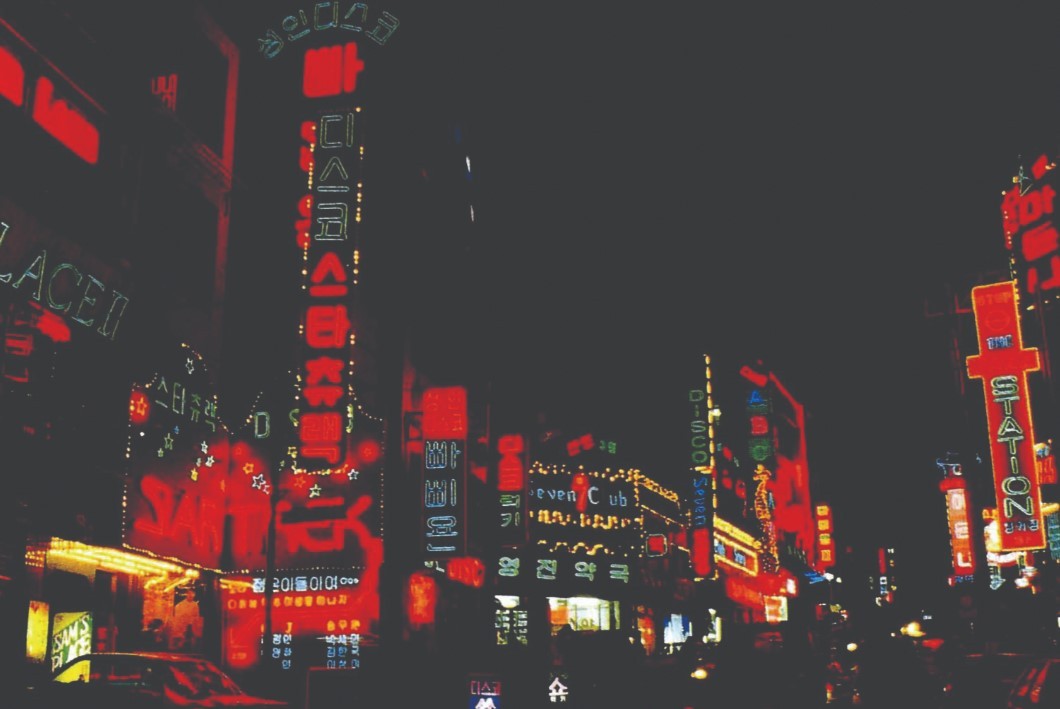 |
A street for international restaurants behind Hamilton Hotel in Itaewon starts to flourish in the 2010s. (Seoul Museum of History) |
Itaewon has long been a neighborhood where people can experience and enjoy a variety of international cultures. International visitors and foreign residents could feel at home in the community, while many Koreans would visit in search of an international vibe.
“I don’t feel homesick very often, but when I do, there is usually something I can feel comfort in there. In Itaewon, I am just one of hundreds of foreigners and no one will pay particular attention to me. So it feels a bit liberating,” said Mitch Goshorn, a 37-year-old American citizen living in Seoul.
Itaewon is often the place in Korea where elements of international culture are introduced and celebrated, and it is no surprise that over the years the neighborhood has become synonymous with Halloween. Long before most Koreans were familiar with the Western holiday, Itaewon was a place where foreign communities could come together to enjoy a Halloween like they would at home and introduce it to their Korean neighbors.
After the 1950-1953 Korean War, the neighborhood began to adopt elements of Western culture, largely influenced by US Army soldiers stationed down the road at Yongsan Garrison. The district started to see foreigners from other countries moving in during the 1970s, and it quickly became an international mecca where foreigners and Koreans could mingle.
“Ever since coming to Korea 16 years ago, Itaewon has been an important part of my experience. It is a place of comfort for many groups, including the large expat community that lives nearby. It is where we gather for comfort food, drinks after work, social events and more,” Jonathan Moore an entrepreneur residing in Seoul, wrote on social media in tribute to the victims of the recent Halloween tragedy that claimed the lives of at least 156 people.
For Koreans, until the late 1980s it was the place to find American food and jazz or purchase Western-style furniture. Specifically, the area around Hamilton Hotel was one of the main draws.
 |
Itaewon becomes a go-to spot for nightlife in the 1980s, as seen in this photograph taken in 1988. (Seoul Museum of History) |
The town became even more international with the inflow of foreign laborers; the South Korean government introduced a system to adopt technical trainees in 1994 from 14 countries, including the Philippines, Bangladesh, Pakistan and Indonesia. Itaewon was a convenient place for many of those workers to settle, a book on Itaewon by the Seoul Museum of History explains.
According to data from the Itaewon Global Village Center, the number of foreign residents in the neighborhood -- encompassing both Itaewon 1-dong and Itaewon 2-dong -- was 3,445 as of the end of September 2021, the most in Yongsan-gu, central Seoul.
Although Itaewon has been a decades-old international town, it wasn't until the 2000s that the area became known for offering authentic food from all around the world.
Clare Youn, a 34-year-old Seoul resident who works at a multinational company, takes international friends out to Itaewon for dinner and entertainment once every three months or so.
“Usually when I have visitors from other countries, they often crave food from home. Itaewon is known for very authentic food. People who are working at restaurants in Itaewon are most likely from that area. For example, if you go to an Indian curry restaurant, they would have Indian chefs. It is not like watered-down flavor,” Youn said. She also visited Itaewon on Saturday with friends from the US and UK to celebrate Halloween. Her group left the area shortly before the tragedy.
Some foreigners who have lived in Seoul for many years and have witnessed the change in Itaewon express bitterness on how the town has changed, especially seeing the area around Hamilton Hotel and across the main road becoming targets of investment.
“The texture of the neighborhood has changed in recent years with US military withdrawal and gentrification. Just many popular foreigner-run establishments, mostly bars and some restaurants, there closed in recent years as the area became more comfortable and popular with locals," said a foreign resident in Seoul who has lived in Seoul since 2009 and requested anonymity.
The United States Forces Korea headquarters was relocated to Camp Humphreys in Pyeongtaek, Gyeonggi Province, in 2018.
"The area becoming so popular and losing some of the authenticity behind its charm isn't too different from what happened about 10 years ago in Insa-dong, then Ikseon-dong," he added.
By Park Yuna (
yunapark@heraldcorp.com)








![[Today’s K-pop] Blackpink’s Jennie, Lisa invited to Coachella as solo acts](http://res.heraldm.com/phpwas/restmb_idxmake.php?idx=644&simg=/content/image/2024/11/21/20241121050099_0.jpg)
